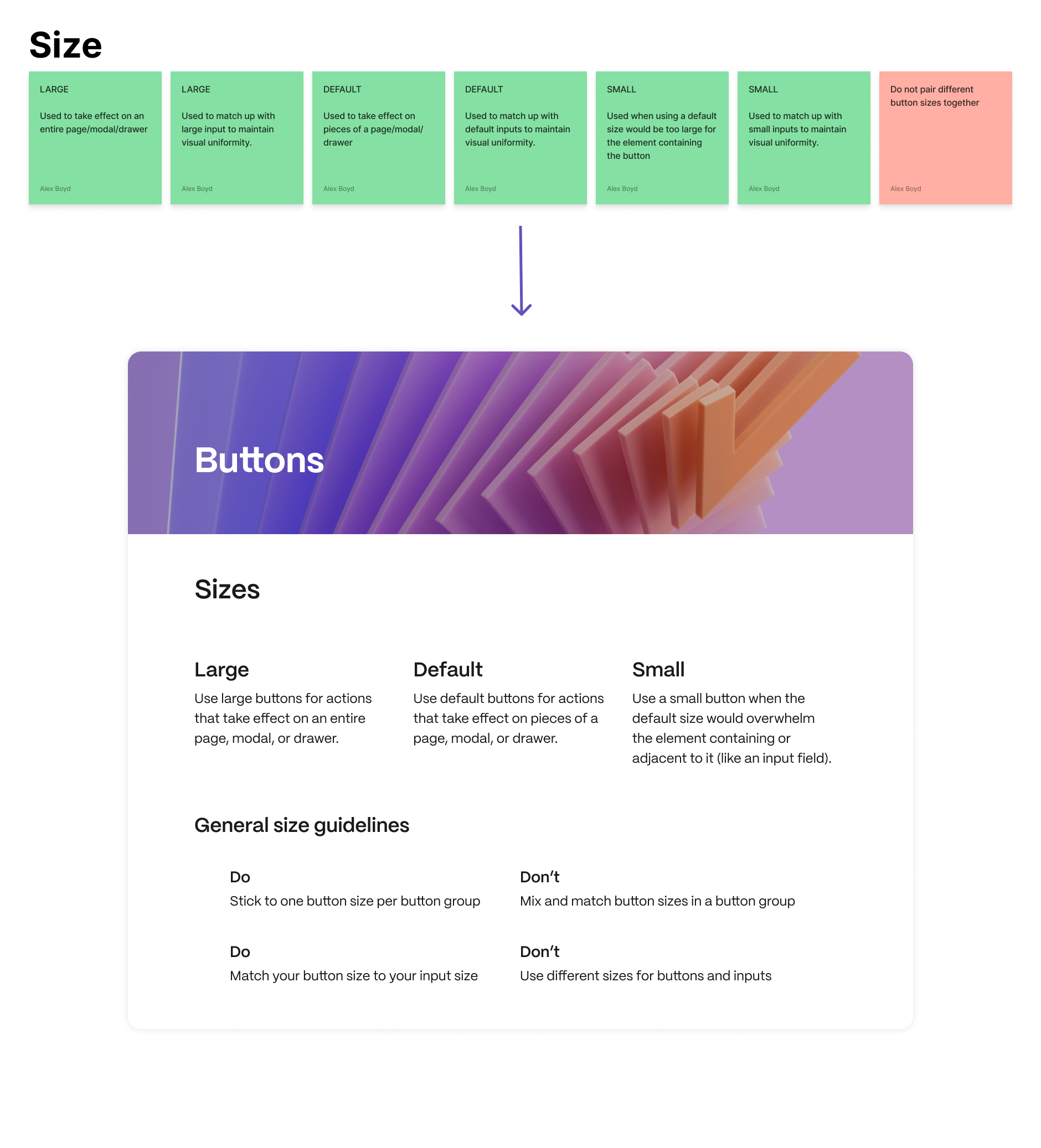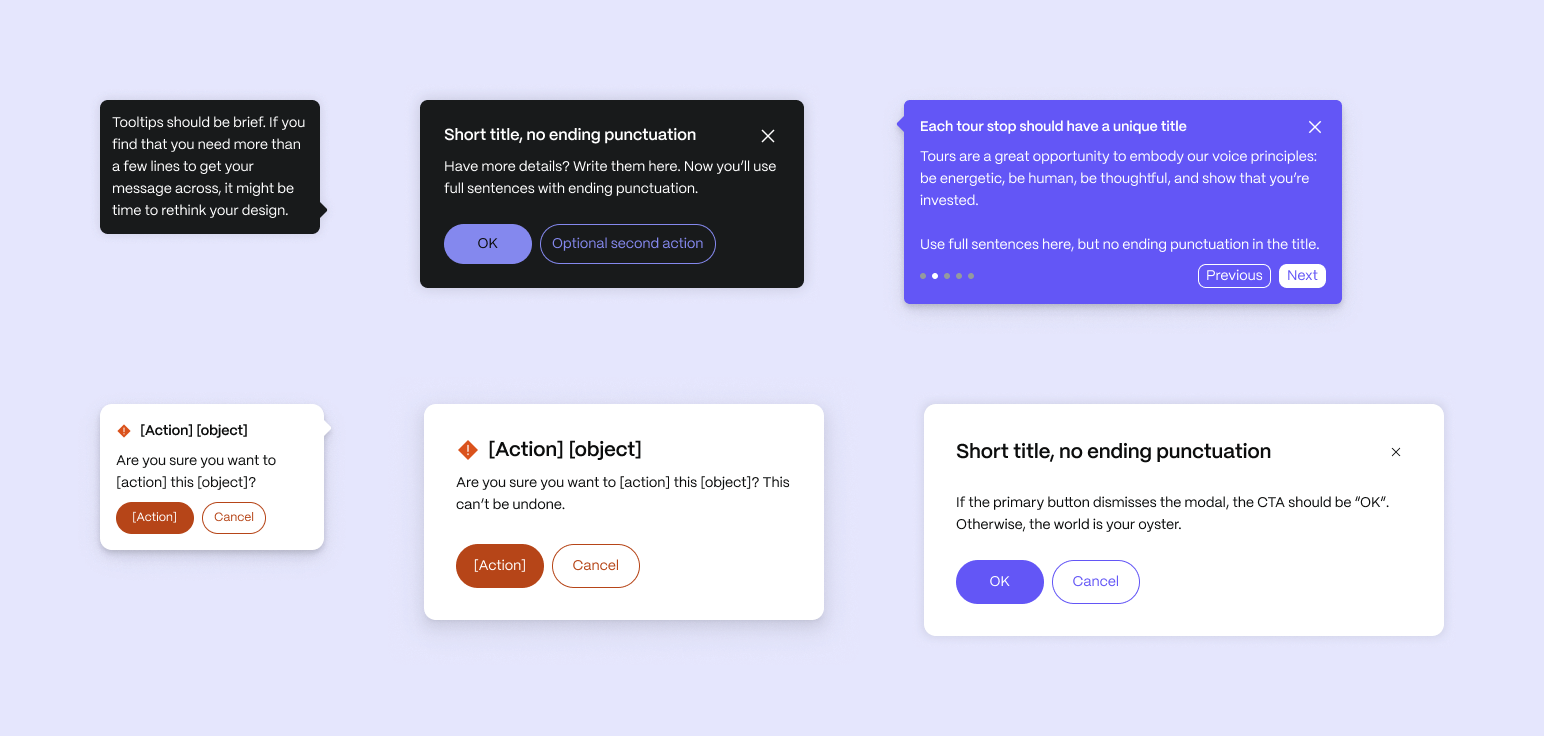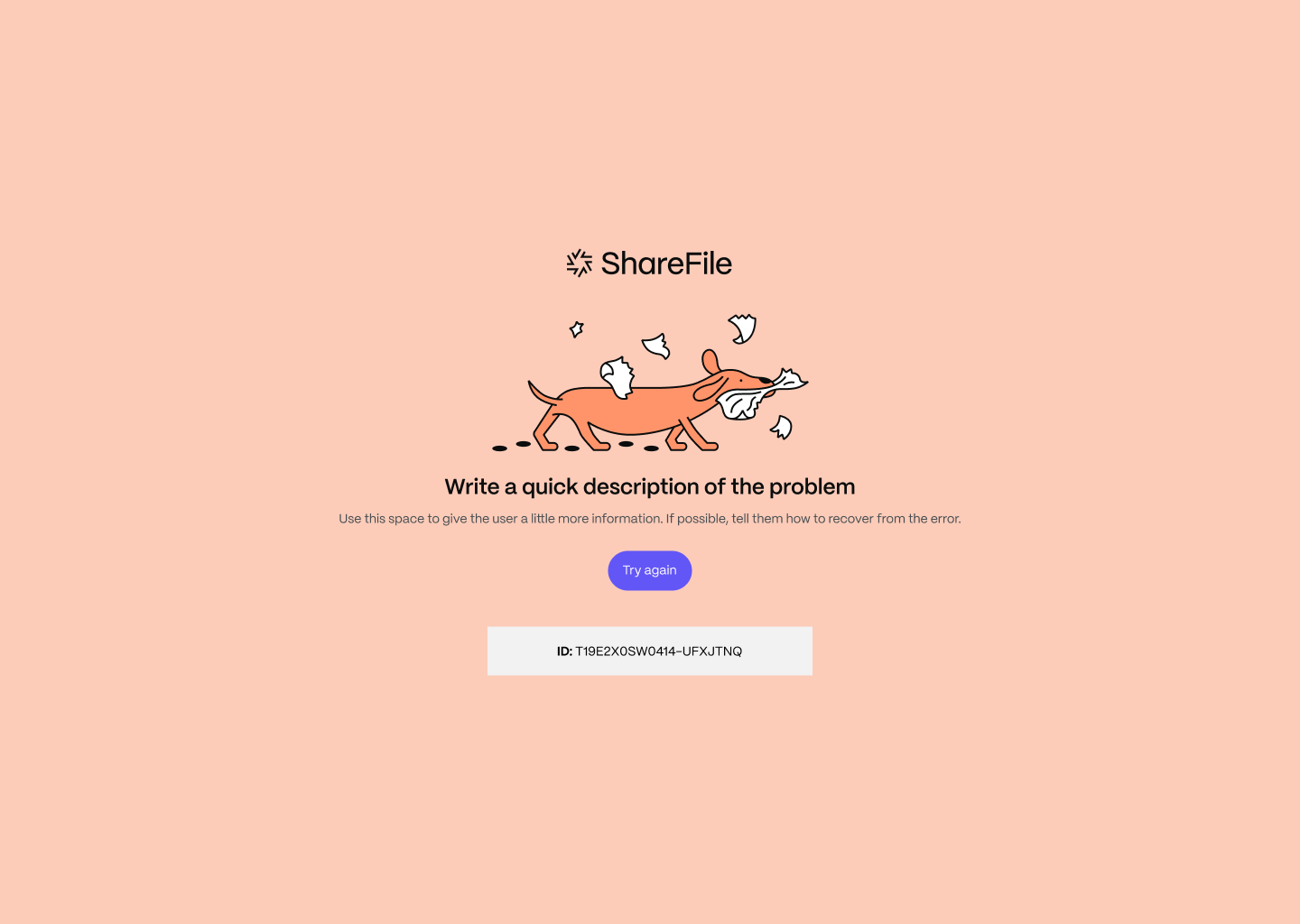While the lead product designer drafted specs for foundational UI elements (color, typography, the grid, etc.), I laid out the foundations for content at a macro level.
Content design was new to ShareFile. Content in the app was all over the place—we were constantly switching back and forth between passive voice and active voice, title case and sentence case, American and British English… the list was endless. The ancestral design system that we inherited from Citrix had no content guidelines, and as the first and only content designer in the org, creating them was my biggest priority.
I did some research into how other design systems incorporated content. Did we need our own content design system like Intuit? A content guide within our foundations like Material Design? Or should I embed content standards in each component’s documentation like Atlassian does?
I landed on first creating high-level, broad guidelines that could apply to any content within the product. Down the road when it was time to write component-level usage guidelines, I’d make sure each had a content section.
I had been holding Content Design Office Hours for a year at this point, and I knew which topics came up with designers most frequently. I made sure all of those sticking points were covered.
Once I had a solid draft, I solicited feedback from designers on the team to ensure it met their needs.
After a couple of iterations, I tested the guidelines by launching a 4-month experiment where I went on maternity leave and left the design team to fend for themselves.



